QuestionHi Karen,
This is my first time on this site and my first question to you, after reading your responses to all other hobbyist, I find you to be very caring and knowledgable about this very interesting hobby that I've just started. First of all I don't know anything! I'm a couplete newjack to this hobby. I go the petshop and try to use my common sense, but I see there's whole lot more to this hobby. I purchased a 33Long for my living room this weekend, with a Fluval 204, 150 watt heater and 8 bags of gravel, my tank has been pumping for 4 days with 3 hedges and 6 amazon swords plants, no plastics two pieces of large driftwood and about 8 nice size rocks. Now my question is this, please expalain to me wht does cycling mean and start from A-Z (PLEASE) because I already have about 20 mixed community fish in there and they seem to be doing alright, I have stress coat and stresszyme, also please tell me how to use it.. I'm sure in the next few days, truble will begin and only the strong fish will live, I know my problem was anxiousness, Please help me out, I plan to print all your answers and share them...Thank You in advance, Tony S. Lee
AnswerDear Tony,
Thank you for your most flattering comments! ;-) Cycling is not so mysterious as it seems when you really get down to it. To make things easier and more simplified, I'm going to explain the process of cycling with simple topic lines--
~What IS cycling?~
This means simply ((or not!)) to allow your aquarium to get established enough to support a decent population of fish without terrible pollutions problems which can wipe out aquariums.....
*So how does it do that?~
By means of 'Special' beneficial bacteria whom are invisible to the plain human eye. These Bacteria begin to grow on all surfaces inside your aquarium and particularly in a good filter (cartridge of material) And they convert ammonia which is given off as a by-product of fish waste into another compound called "Nitrite" Both Ammonia and nitrite are EXTREMELY dangerous to all fishes and aquatic life's health and fortunately the bacteria later convert the nitrite into the least toxic compound of all- Nitrate. There are typically two known types of beneficial bacteria living in a healthy ecosystem of an aquarium-- Nitrosomas and Nitrobacter. But we don't need to be all that scientific to keep a beautiful and healthy aquarium now... So What we do need to know is these bacteria are basically the life support systems of an healthy aquarium, without these bacteria existing--it would be impossible for any aquarium to be healthy longterm.
~Are the beneficial bacteria dangerous to humans~
Good heavens no.... ;-);-);-)hehehehehehehehe
(just thought perhaps you were wondering)
~When and how do these Beneficial or "good" bacteria grow?~
Firstly, if they have a food source (Ammonia) they will begin to colonize the aquarium gravel bed and everywhere else. But they are slow growing bacteria which take several weeks to become fully established and able to support a group of waste producing fish.
-This is also why stocking your aquarium with only a few fish and waiting for the cycle to finish would have been your best bet for suceess. And is also why stocking with a complete mess of fish causes disasters with pollution buildup because the bacteria have yet to become established well enough to handle the bio-load (basically "waste" load)
~Alright, how Do you get them cycled in an aquarium?~
Patience is one of the first keys you must remember when first starting up your aquarium. Stocking with just about 3 fish to provide an ammonia source for the bacteria to begin colonizing but do not add anymore until you are certain that there is no ammonia or nitrite are present.
-Of course, your case is a little bit different than slow stocking and waiting. Hehehe, ;-)..Nevermind that, what you really need now is a good ammonia and nitrite and preferably nitrate test kit for the sake of your fish. I believe you Can make it through the cycling without that terrible disasters of having too many fish at once happening. Test kits can easily be found at your local fishstore. Liquid tests tend to be more accurate (And in my opinion) easier to use than dip strips.
There is no trouble to testing. Just filling a little vial and adding so many drops of test liquid and waiting a minute or two until the color changes in the vial. Then you compare what color you have to a chart and then determin what level your ammonia or nitrite is at.
*You need to test everyday.
*If ammonia or nitrite levels are above safe bounds or spiked the least bit. (You'll have to expect that with that many fish) Please be prepared to do at least 50% water changes. This is for the health and safety of your fish. Doing a large water change like this won't affect your bacteria because they have yet to handle this much ammonia and removing too much won't harm them. Use a medium size gravel vacumm found at your local fishshop to change your water.
-What you should Always insure you do is when changing water--to always insure the replacement water is equal in that of temperature to your aquarium by using a simple aquarium thermometer and is properly dechlorinated with a water conditioner. Failing to due this can make water changes very harmful.
*Feed your fish VERY lightly. No more than one flake per fish once a day. It's for the sake of the fishes well-being to avoid too much feeding and too much pollution than what there may already be until the aquarium is cycled...
~So how do you know if the aquarium is cycled?~
The best means are by testing the water.. You'll hopefully be monitering your ammonia, nitrit, and nitrate levels everyday and watching their rises and declines. Typically Ammonia spikes are high ((hopefully never high though)) and this is the most harmful time for the fish to be living in the aquarium. Water changes are the key. -Then you're ammonia will begin to drop a little while Nitrite readings will rise. The three levels sort of take turns rising and falling until ammonia and nitrite levels have dropped completely to zero and nitrate has risen dramatically. Your aquarium has cycled!!!!
*But please keep in mind to be patient and know this does take time. Typically it'll be fully established in 4-6 weeks when the bacteria are fully colonized and healthy.
~Remember that the beneficial bacteria are sensitive too!~
Just like fish they need to be wet or moist at all times and they need oxygenated water to thrive. Try not to never completely replace whater filter media you might have for your aquarium. In the case of your Fluval (very nice brand) only replace half of the worn out material but only rinse it in old aquarium water when it's dirty. Never rinse it in plain tap water--this kills bacteria just as the chlorine in tap water kills fish. Just use an unused bucket (perhaps the one you make water changes with?) to wash and rinse the dirty material in siphoned out water and replace it back. Replacing all of the filter media can cause a severe depletion in the bacterial levels.
~Stresszyme by "Aquarium Pharmaceuticals" is an beneficial bacteria additive claimed to 'jump start' new aquariums. I would go a head and use this for further help in possibly preventing bad pollution problems but I wouldn't count on it to completely cycle your aquarium which still may need time to get fully established.
~Stresscoat made by the same company is a good all-around water conditioner and is a MUST requirement for water changes and anytime you add tap water into your aquarium. Stresscoat remove Chlorine and neutralizes Chloramines plus removes heavy metals present in your tap water. Sometimes it even includes aloe vera to help stressed fish repair damaged fins or other injures.
So to try to wrap this up (this is quite a novel!) here are what I would recommend you do-
*Try to get test kits for ammonia, nitrite and nitrate. Or at the very least, ammonia. Liquid tests are best.
*~Test your water everyday for these levels
*~If ammonia or nitrite are above the safe bounds or the least bit high--a 50%water change is in immediate order. Remember the important steps to take when making the replacement water safe and not stressful for your fish.
*~Feed your fish very lightly- Later when your aquarium has cycled, you can feed a little more and more variety. But for now, please just feed a simple clean food like good quality flake.
*~Be patient and try not to get into the 'additives syndrome' that many people get into (no offence anybody!) where they try to add everything possible to their aquarium to get all the parameters perfect and end up with stressed fish. All you need is a good water conditioner, and lots of water changes.
-Water changes are the best thing you can do for your fish.
*Always remember that when you are new to this hobby, that everything seems very complicated and confusing. But do know that as time passes and you gain your own experience (which won't take long) everything will seem quite easy and and fish care will come as a breeze. But as I said in my profile, "there is always something new to learn" Research is your best bet with fishkeeping. Research through books,magazines,internet, forums, and sometimes good experienced fish store people is the greatest way to begin this hobby as knowledge is the door but experience, however, is the key.
Well, I really hope this helps clear some things up for you.
Feel free to write anymore questions or concerns you may have. I am more than happy to help. ;-)
Best wishes and Happy fishkeeping!
Karen~

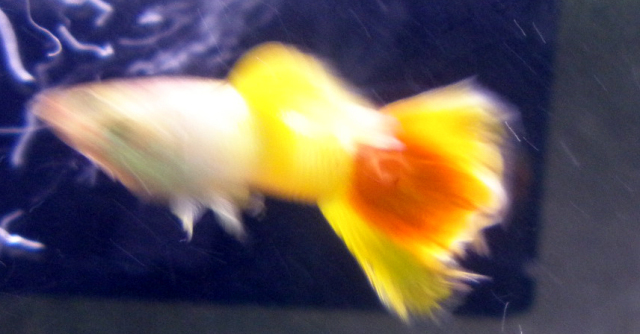 tail growth
QuestionQUESTION: I have had a male guppy for several m
tail growth
QuestionQUESTION: I have had a male guppy for several m
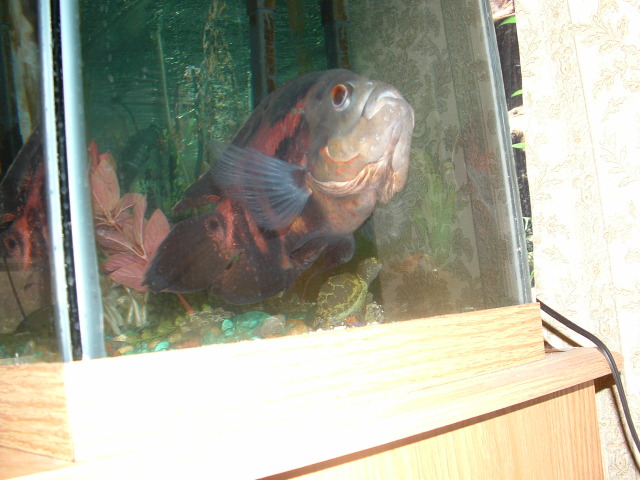 high nitrites Oscar mouth opening and closing
QuestionQUESTION: You have helped me before. I HAVE A 7
high nitrites Oscar mouth opening and closing
QuestionQUESTION: You have helped me before. I HAVE A 7
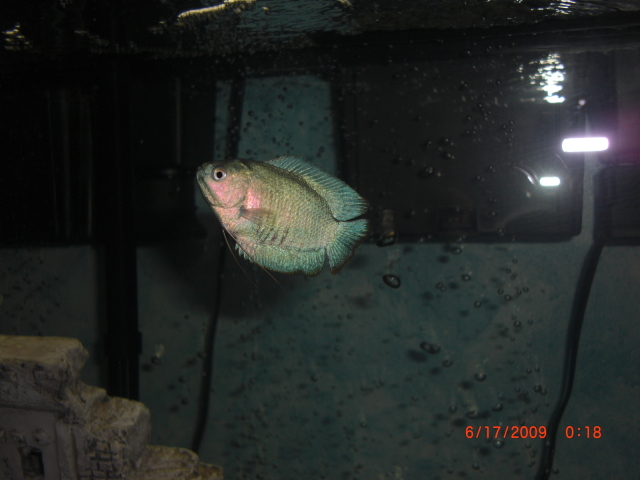 POWDER BLUE DWARF GOURAMI
Question
POWDER BLUE DWARF GOUR
HI. I JUST WANT TO KNOW
POWDER BLUE DWARF GOURAMI
Question
POWDER BLUE DWARF GOUR
HI. I JUST WANT TO KNOW
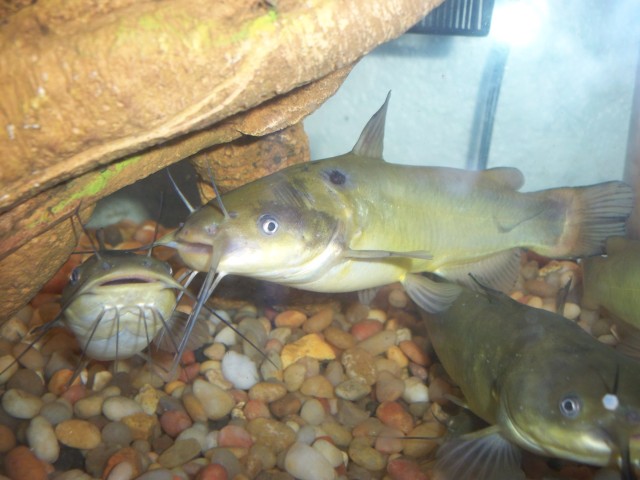 Spots and marks on catfish.
Question
Channel catfish
Hello,
I have 8 channe
Spots and marks on catfish.
Question
Channel catfish
Hello,
I have 8 channe
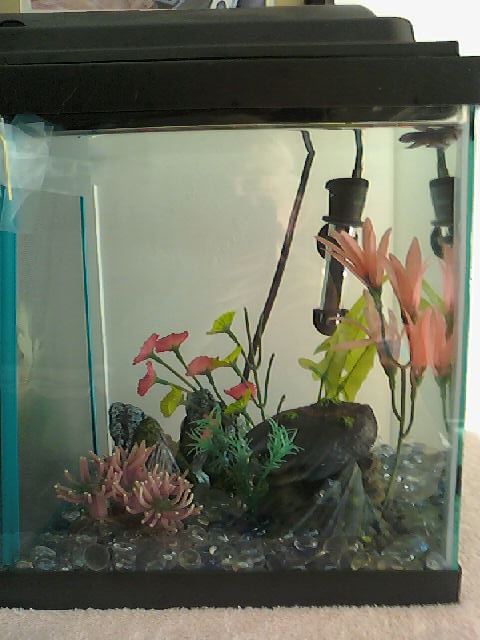 Lethargic Betta Fish
QuestionDorothy
QUESTION: Dear Jaymie,
For the
Lethargic Betta Fish
QuestionDorothy
QUESTION: Dear Jaymie,
For the